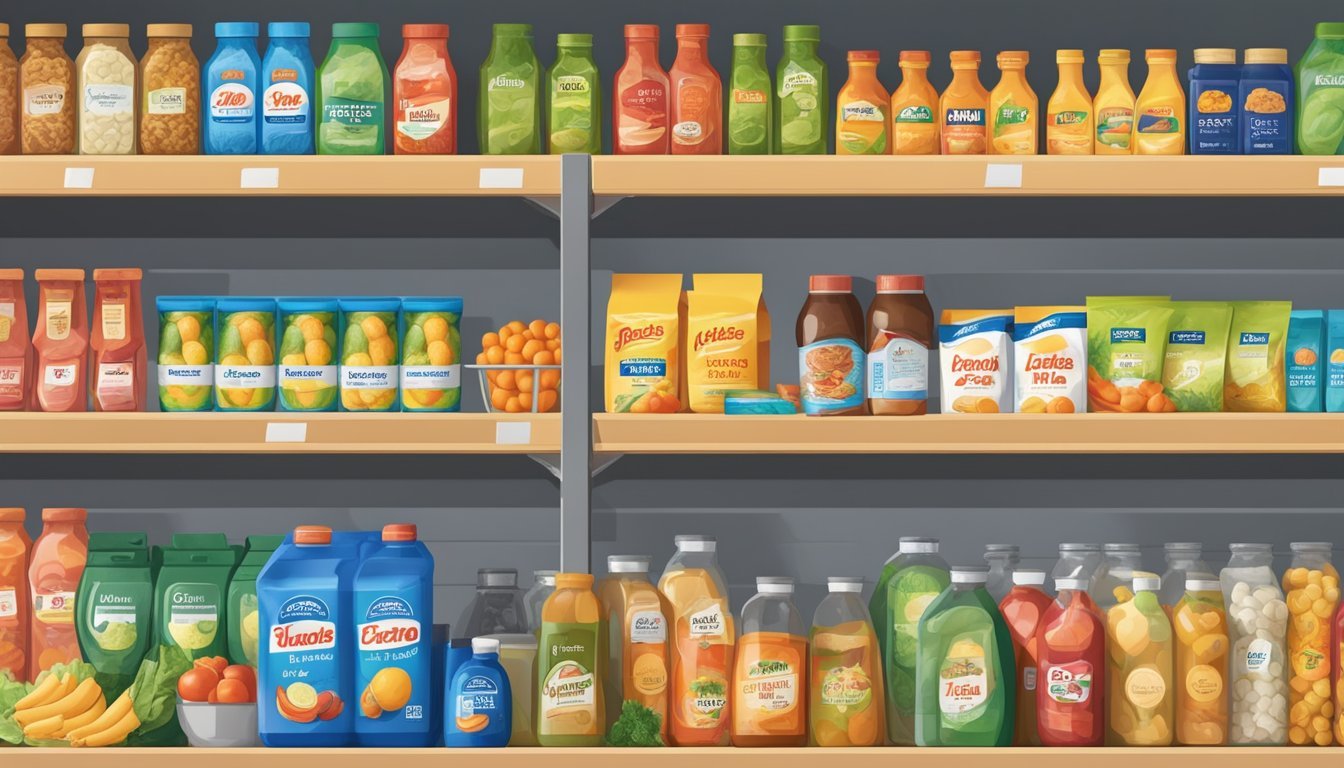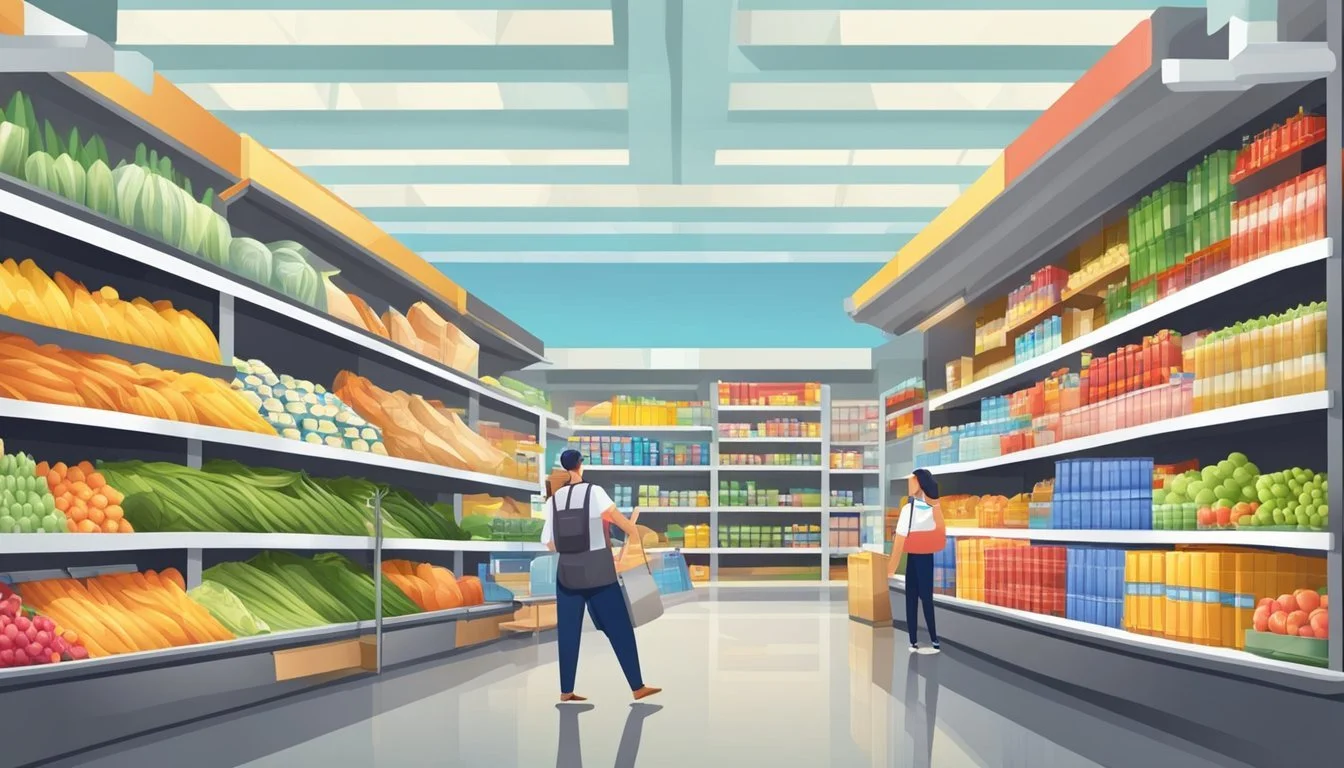Is Lidl Cheaper Than Ralphs?
Analyzing Grocery Prices
Part of Our Grocery Store Guide with Details on Lidl Prices and Ralphs PricesRalphs Prices
When deciding where to shop for groceries, price is often a determining factor for consumers. Lidl, a grocery chain originating from Germany, has been expanding its presence in the United States and aims to offer competitive pricing to its customers. By focusing on a smaller selection of items, primarily its own store brands, Lidl keeps its overhead costs low and often undercuts its rivals.
Ralphs, a well-established supermarket chain on the West Coast and a subsidiary of Kroger, is known for providing a variety of consumer choices including national and store brands. Ralphs competes in the diverse US grocery market by offering regular promotions and discounts to its customers.
Comparing Lidl and Ralphs presents a glimpse into how different business strategies affect pricing and can influence where consumers choose to shop. While Lidl's lean and efficient model often allows for lower prices, Ralphs' larger scale and wide selection appeal to a different segment of shoppers, those looking for variety and specific brands that may not be present at discount-oriented stores like Lidl.
Overview of Grocery Store Pricing
Assessing grocery store pricing involves numerous factors, from store branding to market competition, each playing a critical role in the final prices consumers see on the shelves.
Factors Influencing Grocery Store Prices
The prices of grocery items are influenced by an array of factors including supply chain efficiency, the cost of goods sold (COGS), and the economic conditions of regions where stores operate. Furthermore, discounts and sales can temporarily alter pricing.
The Role of Store Brands and Private Labels
Store brands like Kirkland Signature (Costco), Simply Nature (Aldi), and Simple Truth (Kroger) offer savings due to lower marketing and packaging costs. Store brands often price their products lower than national brands but maintain similar quality standards.
Price Comparison Strategies
Shoppers use digital coupons and weekly ads to find the best deals. Price comparison is a strategic approach to save money, with tools and apps streamlining this process. Aldi and Lidl's low prices often set the benchmark in this comparison.
Impact of Market Expansion and Competition
The expansion of stores like Trader Joe's and Sprouts Farmers Market into the U.S. market has intensified competition. This rivalry typically results in better deals for consumers as stores vie for their business.
Consumers' Perception of Grocery Store Value
Value perception isn’t solely about low prices. It encompasses the shopping experience, the quality of fresh produce, meats, and dairy, and the efficiency of the shopping experience. Stores with higher prices like Whole Foods may be perceived as offering greater value due to their selection of organic items.
Location and Accessibility of Grocery Chains
The accessibility of grocery chains like Walmart, Publix, and Kroger influences consumer choices. Stores in prime locations can charge higher prices due to the added convenience factor, which is often reflected in the grocery bill.
Grocery Chain Operational Costs
Operational costs such as rent, utilities, and labor can impact pricing. Efficient chains like Aldi manage to offer lower prices by minimizing these costs through smaller store layouts and a limited selection of groceries, focusing on high-turnover items to maintain savings.
Comparison Between Lidl and Ralphs
This section offers a detailed analysis of Lidl and Ralphs, focusing on the nuances of pricing, product range, quality, brand offerings, customer experience, promotions, and overall consumer loyalty and value perception.
Price Analysis of Lidl vs. Ralphs
Comparative studies indicate that Lidl often sets competitive prices for many grocery items. A 3-pound bag of Bartlett pears, for instance, is available at Lidl for $3.49, whereas Ralphs prices the same at $4.99.
Variety and Availability of Products
Ralphs tends to have a broader reach with more store locations, possibly offering a wider array of products. Conversely, Lidl, with a smaller footprint, may have limited availability in certain areas but often provides a curated selection focused on cost-efficiency.
Quality of Goods and Fresh Produce
In terms of product quality, both retailers offer a range of options. While the quality of fresh produce, meat, and dairy can be subjective, consumer feedback suggests satisfaction with both chains. Lidl emphasizes fresh produce and bakery items, closely rivaling the quality standards of Ralphs.
Store Brands and Exclusive Products
Lidl and Ralphs offer their exclusive store brands—Lidl's Simply Nature and Ralphs' Simple Truth. Product comparisons show that Lidl's store-brand products are often priced lower, providing savings without compromising on quality.
Shopper Experience: Layout and Services
Ralphs provides a traditional American grocery shopping experience, with wide aisles and a familiar layout. Lidl's European roots influence its store design, which may offer a unique shopping experience compared to Ralphs, often focusing on efficiency.
Promotions and Discounts Offered
Both Lidl and Ralphs engage consumers with various sales, coupons, and discounts. Ralphs is known to offer savings through its membership program, while Lidl attracts customers with its low prices and occasional promotions.
Efficiency and Checkout Experience
Lidl has a reputation for efficient store layouts and checkout experiences, often resulting in shorter waiting times. Ralphs also strives to maintain efficiency at checkout with multiple options, including self-checkout lanes.
Consumer Loyalty and Perceived Value
Ralphs, with its widespread presence, tends to retain consumer loyalty, particularly in California. Lidl appeals to customers with its emphasis on low prices and quality store brand products, cultivating perceived value among its consumer base.
Budget-Friendly Shopping Tips
To navigate the often overwhelming world of grocery shopping on a budget, understanding specific strategies is essential. These tips can help shoppers maintain a healthy balance between quality and affordability.
Strategies for Saving on Your Grocery Bill
Shoppers can significantly reduce their grocery bill by visiting stores like Lidl and Aldi, known for their lower prices due to fewer brands and efficient store layouts. Additionally, buying in bulk and choosing generic over name brands can result in substantial savings.
How to Make the Most of Store Brands
Store brands like Lidl's "Simply Nature" or Kroger's "Simple Truth" often offer the same quality as name brands at a lower price point. Shoppers can make the most of store brands by comparing ingredients and prices with their name-brand counterparts to ensure they are getting the best deal.
When and Where to Find the Best Deals
The best deals are often found mid-week when grocery stores roll out new sales. Digital coupons and discounts can also lead to significant savings, with Lidl taking couponing to a new level with their money-saving opportunities.
Creating an Efficient Shopping List
An efficient shopping list focuses on both needs and budget. Align your list with weekly sales and discounts to optimize savings. A clear, prioritized list prevents impulse purchases and ensures shoppers stick to their budget.
Loyalty Programs and Their Benefits
Enrollment in grocery store loyalty programs can lead to deeper discounts and exclusive offers. Stores like Lidl offer digital coupons to loyalty program members, often resulting in added savings on each shopping trip.
Understanding the Retail Grocery Landscape
The retail grocery sector showcases a dynamic interplay between traditional giants and emergent discount chains, with e-commerce platforms redefining shopping experiences and expansion strategies.
Key Players in the U.S. Grocery Market
In the U.S. market, several grocery stores hold significant sway, with Walmart, Kroger, Target, and Whole Foods Market being prominent names. Walmart leads with aggressive pricing and vast store count. Kroger, with its diverse store format, appeals to a broad consumer base. Target offers a mix of daily necessities and affordable luxuries, while Whole Foods, now under Amazon's wing, has a reputation for premium organic products. On the discount front, Aldi and Lidl have made vast inroads as budget-friendly alternatives, gaining market share with a focused selection of goods at lower prices.
Emergent Trends in Grocery Shopping
Shoppers are increasingly looking for value and convenience, fuelling the rise of discount supermarket chains like Aldi and Lidl. Amidst competition, digital coupons and loyalty programs are becoming mainstream as stores seek to lock in customer loyalty. Whole Foods Market has also been integrating Amazon's digital prowess to enhance the grocery shopping experience, both in-store and online.
The Impact of E-commerce on Physical Stores
The quickening pace of e-commerce adoption is exerting pressure on physical grocery stores. In response, chains have fortified their online presence. Amazon's acquisition of Whole Foods signified a pivotal moment, bringing a robust digital backbone to physical store patronage. Others, including Walmart and Target, have expanded their digital marketplaces and pickup & delivery services to maintain market relevance.
Expansion and Diversification Strategies
Major players have been navigating the competitive landscape via strategies that include expansion of geographic footprint and diversification of offerings. Aldi announced significant expansion plans with a focus on improving and enlarging stores nationwide. Similarly, Lidl is extending its reach, offering diverse alternatives to traditional U.S. grocery models. Both chains focus on streamlining selections to maintain low prices, while larger chains like Walmart and Kroger continuously innovate to diversify their product arrays and enhance the in-store experience.
Detailed Product Comparison
In this comparison between Lidl and Ralphs, products are analyzed across various departments to pinpoint where consumers can expect cost savings or increased choice.
Analysis of Grocery Categories
When it comes to grocery categories such as produce, meat, dairy, and bakery, Lidl often presents a more cost-efficient option. Consumers might find a 3-pound bag of Bartlett pears at Lidl priced at $3.49, while the same bag could cost $4.00 at Ralphs. The store brand offerings from Lidl in categories like meats and bakery items are frequently seen to have lower price points than those at Ralphs.
Non-Grocery Items: Convenience and Availability
Ralphs tends to provide a broader selection in non-grocery items such as toiletries, electronics, kitchen appliances, and toys. While Lidl does offer these products, the range available might be narrower, catering primarily to the most common consumer needs with their store brands and fewer alternative brands.
Consumer Choices: Fewer Brands Versus Variety
Shoppers at Lidl encounter fewer brands but generally better prices, especially within their own store brands. Ralphs, on the other hand, tends to offer a wider array of brands, which can translate into a variety of prices for similar items. This variance allows consumers to choose based on brand preference in addition to price.
Household Essentials Beyond Food
In the realm of household necessities such as diapers and toiletries, Lidl's pricing for store brands often undercuts Ralphs'. However, shoppers looking for specific brands may find a larger selection at Ralphs, which can influence the overall shopping experience for those loyal to particular brand names.







